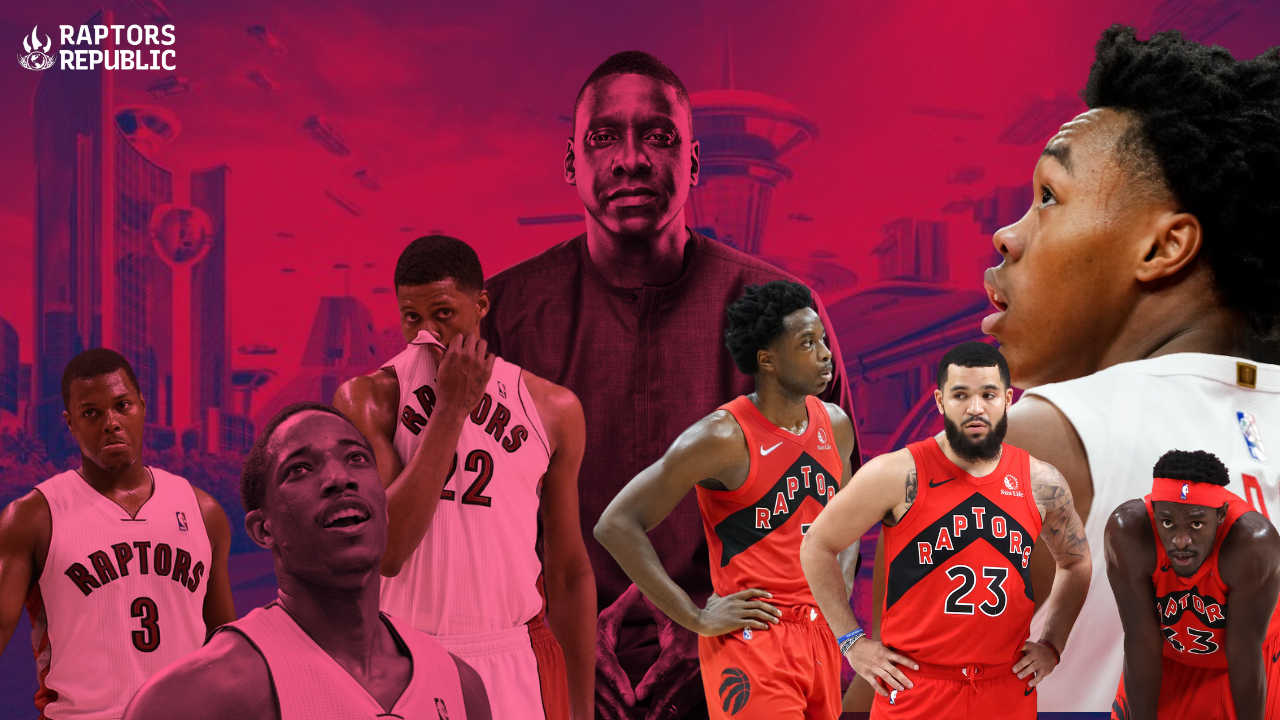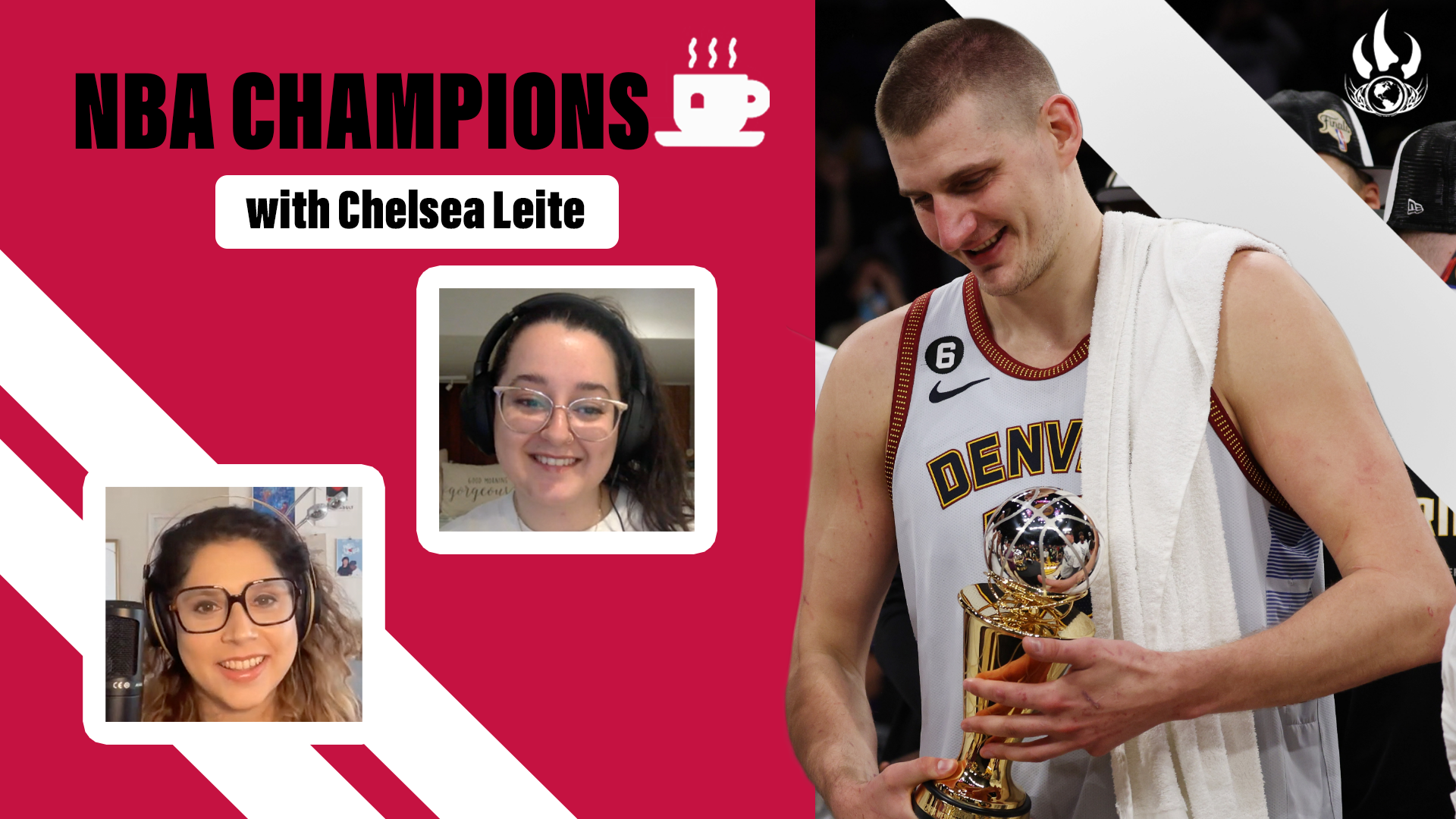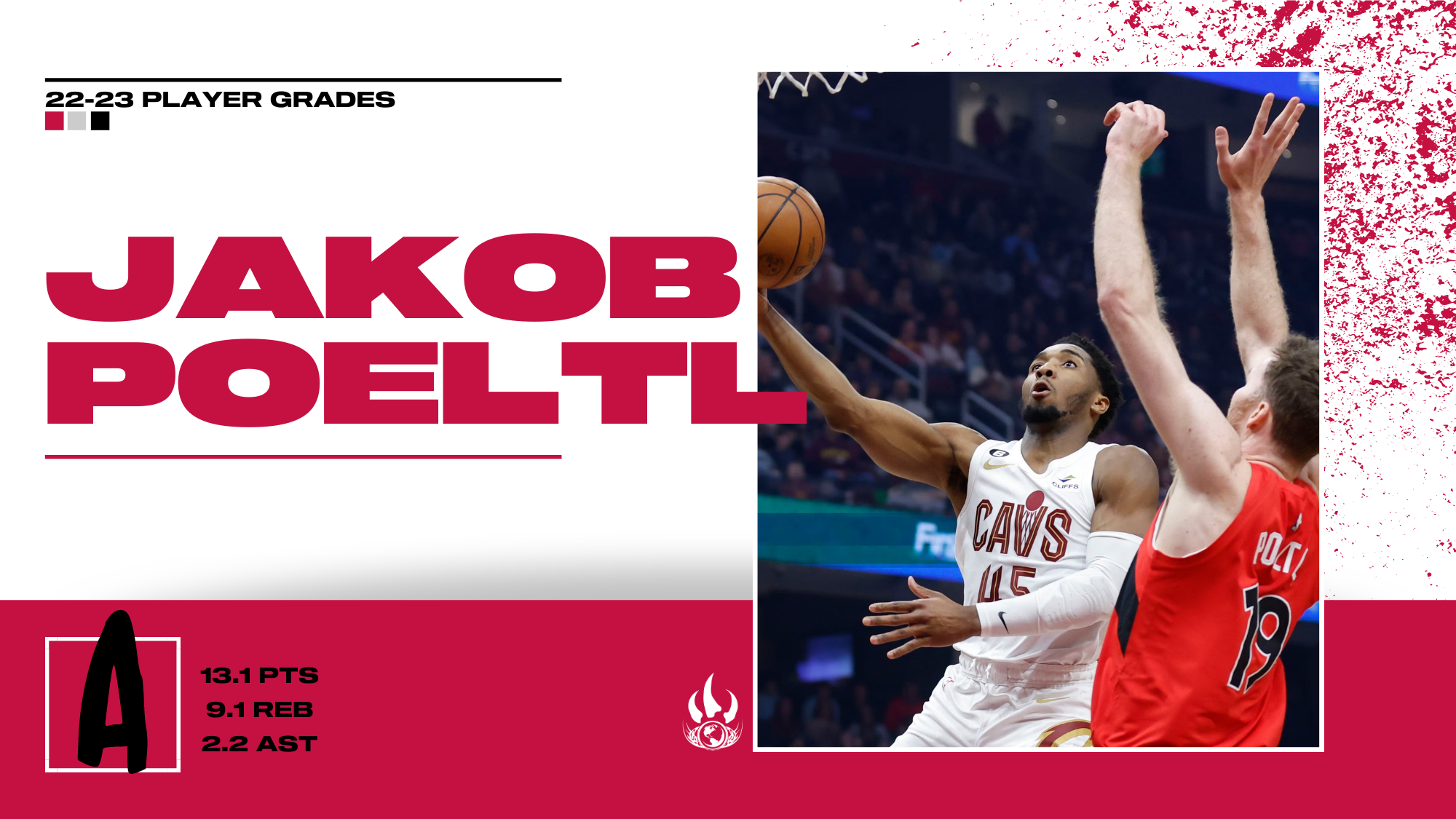The Raptors are at a more uncertain point as a franchise than most people have become accustomed to. This isn’t to say they’re in a horrible spot, but rather, that they aren’t the juggernaut of success and excellence that made them the third most winningest franchise across the past decade — Warriors (571 wins), Clippers (545 wins), Raptors (524 wins) — and for the first time, champions.
In 2013, the Raptors were at a crossroads as well. One road was taken away by James Dolan’s insecurities, and thank god because the Raptors don’t win a championship if the Lowry-to-Knicks trade goes through. But, another road was taken by Masai Ujiri & co. as they jettisoned Rudy Gay and started the We The North era. The ripple effects ring loud and clear. The Raptors newest coach, Darko Rajakovic, cheered “We the North!” to a crowd full of people just last week.
Big thanks to commenter moremilk for bringing this up under my latest piece and making me want to take a closer look at how these teams compare. Cool idea and a great reference point.
Okay, let’s bring up the similarities! The NBA is driven by stars, so let’s start there.
In terms of age, the best players of each team (Lowry & Pascal Siakam) are about 2 years apart. 23-24 will be Siakam’s age 29 season, and 13-14 was Lowry’s age 27 season. They’re also both, at that point, looking at free agency after the season. In terms of impact, despite Siakam being far more decorated at this point in their careers, it’s safe to say they’re both giving you certain All-Star impact, and can reach All-NBA level. Siakam is more robust in the traditional numbers, and Lowry does better in the advanced, catch-all stuff. Not a 1-to-1, but a pretty clean comparison. The big difference is the salaries, but we’ll discuss that later.
Now, I’m gonna do something a little odd, maybe. Because there aren’t clean comparisons to either Rudy Gay or DeMar DeRozan, I think I’m going to label DeRozan and O.G. Anunoby as the comparison because of their ages, and the fact that they’re close in terms of impact at that point in time – and I’m actually pretty sure many people would argue that Anunoby now is a better player than DeRozan in 13-14. Gay and Fred VanVleet have some clean comparison points as well, but we’ll touch on that a bit later.
DeRozan, age 24 season, fresh off an extension, and a soon to be All-Star. Anunoby, age 26 season, extension eligible, and near All-Star impact. Both highly valued around the league. We can leave this one here, as we’ll visit the contracts later.
VanVleet, age 29/30 season, presumably getting paid quite well, All-Star/near All-Star impact when healthy. Gay, age 27 season, getting paid quite well, sub-all-star impact, but a good player. Contracts later.
The look at the Raptors war chest (picks, young players with upside etc.) is coming later. But, since so much of the Raptors current money situation is expected to be tied up in a few main players, let’s look at that.
In 2013-14, the salary cap was 58.679 million, and the luxury tax was set at 71.748 million. The 2013-14 Raptors came in at 71.561 million by seasons end, just under the tax. However, prior to the Gay trade they were going to be a couple million into the tax.
In 2023-24, the salary cap is projected for 134 million, and the luxury tax threshold is expected to be 162 million. Let’s take a moment to say… wow is there money in the NBA. Comfortably doubled the cap in a decade. If the Raptors bring everyone back, with rough estimates of salaries (here is the look at Poeltl, VanVleet, and Trent Jr.) then they’re going to be way into the luxury tax.
MONEY!
Okay, let’s compare some salaries. First Siakam & Lowry:
In 2023-24, Pascal Siakam’s contract takes up 28.3-percent of the league’s cap space, and he is likely to keep making a lot of money, a similar chunk of the cap, on his next contract as well.
In 2013-14, Kyle Lowry’s contract took up 10.5-percent of the league’s cap space, and he would go on to sign a contract that would take up 19-percent of the cap in 2014-15, 17-percent of the cap in 2015-16, and 12.7-percent of the cap in 16-17.
Basically, a lot of the Raptors success and flexibility through this era was built around the fact that they were paying an All-Star, clear All-NBA impact player, and one of the best point guards of that era, hardly anything. Siakam is worth his money, to be certain, but as far as what the Raptors were paying for high level impact and their best player? They’re incomparable.
Anunoby & DeRozan:
In 2023-24, Anunoby’s contract takes up 13.9-percent of the league’s cap space, and he is likely to command a contract in the near future that gets him closer to 17-percent of the cap or higher.
In 2013-14, DeRozan’s contract took up 16.2-percent of the league’s cap space, and in the following years of his extension he took up 15-percent, and 13.4-percent.
So, in the comparative time frames, Anunoby and DeRozan are probably going to make a similar amount of money.
Rudy Gay & Fred VanVleet (if he returns).
Gay was making 30.5-percent of the league’s cap space in 2013-14. That is A LOT. With VanVleet’s free agency looming, I think he’ll make between 27-30 million a year on his next deal. Let’s shoot for the higher percentage, to be safe, and assume that he’ll be making 22-percent of the league’s cap space. I know a lot of fans don’t want that, but hey it’s all hypothetical.
Altogether, the top three earners account for, in 13-14, 57-percent of the cap. In 23-24, the top-3 are projected to earn about 64-percent of the cap. So, a little more expensive. 7-percent of the cap is around the value of the mid-level exception, if that matters to you. However, the big difference is obviously that the Raptors highest earner now, is unquestionably their best player. Back then? You could probably make the case that Gay was #2 or #3, but you get the point.
The Raptors got out of that whole salary pickle by trading Gay to Sacramento for Patrick Patterson, Chuck Hayes, Greivis Vasquez, and John Salmons. Salmons would finish his contract with the Raptors that season (missing those free throws… you remember…) and then was traded to the Hawks for Lou Williams, and the draft rights to Lucas Nogueira. Nice little trade. Hayes stuck around, providing aesthetic free throw intrigue and giving Matt & Jack heaps of “now THAT is post-defense” material to work with, before eventually leaving the team after two seasons. Patterson was an excellent bench piece for years. He struggled in the post season, but he was great in Toronto. He left in free agency after 4 years with the team – a casualty of the ‘culture reset’.
The big one, Vasquez. Remembered more for what he was traded for, rather than the pretty nice guard play he brought off the bench and a massive shot in the playoffs. He was traded to the Bucks for a second round pick that became Norman Powell and a first round pick that became O.G. Anunoby. Good grief, now that’s a trade. At the time? Everyone thought it was an overpay. Considering the Raptors got two fantastic players out of those draft slots? Almost unconscionable.
It seems unlikely that the Raptors trio sticks together for much longer, and it’s also unlikely that they pull off the type of multi-trade heist that allowed for them to compete and restock the asset cupboard.
Let’s put that to the side for a bit and compare asset cupboards while we’re here. Let’s list the players who ended up having only a little/negligible value back in 2013-14: Tyler Hansbrough, Dwight Buycks, Austin Daye, Nando De Colo (do they still have his rights????), Landry Fields, Aaron Gray, Steve Novak, and Julyan Stone. We’ve talked about the outcomes of the guys who came back in the Gay trade, and otherwise, the Raptors had very little on-roster talent.
The big value boys:
Jonas Valanciunas & Scottie Barnes. Both 2 years removed from their draft year. Barnes is talked about in the Kevin Durant sweepstakes, Valanciunas in the Harden sweepstakes way back when. Both considered future stars by the organization, and by many (not all) people around the league. Overall though, Barnes with the ROY, more star power, a higher ceiling, and it’s impossible to compare, but I’d imagine more value.
Impact guys:
For 2023-24, it’s (hopefully) Jakob Poeltl, Precious Achiuwa, Otto Porter Jr., (maybe) Gary Trent Jr., and Chris Boucher. For 2013-14 it was Amir Johnson, Terrence Ross, Patrick Patterson, Greivis Vasquez, and Tyler Hansbrough (I’m not sure he makes the cut).
Of those groups, Ross, Achiuwa, & Trent Jr. (to a little bit lesser degree) were/are considered prospects as well as impact players. You can realistically dream on high potential, improvement, big outcomes. For much of the fanbase, Ross should’ve supplanted DeRozan. And there’s parallels for much of the fanbases thoughts on both Trent Jr. & Achiuwa.
Prospects:
I mean this when I say it: the 2013-14 Raptors had nothing in the way of prospects, really. There was talks about Masai making a swing and trying to trade into the draft to scoop Giannis Antetokounmpo (Andrea Bargnani & Vasquez were going for 1sts, how hard did he try??), but that roster was very short on young talent. The hope was that the Bruno Caboclo selection a year later would change that, but it never did. Regardless! Tough!
This upcoming years Raptors, if things stay still, will have Christian Koloko, and the 13th pick as prospects. As much as I like a guy like Jeff Dowtin Jr., he’s 26 and trying to crack the back end of a roster. Dalano Banton? It seems more likely that he doesn’t pop off, but who knows. Feel pretty strongly about Koloko being good, and the 13th pick being good.
So, just roster? The 2023-24 team would be more expensive, but objectively more talented. If you were limited to selecting rosters without the benefit of hindsight (about Lowry especially), most people look at the accolades attached to each player and they’re taking the 23-24 version.
Picks on the books? Both teams were fresh off a year where they didn’t have a first rounder. One was traded for Lowry, the other for Thaddeus Young. The 2013-14 Raptors had 4 first round picks over the next 3 years that would end up being #20, #20, #9 (thank you, Il Mago), and #27. Caboclo, Delon Wright, Poeltl, and Siakam. Not to mention a looming UDFA that would become VanVleet. The 23-24 Raptors have 2 first rounders over their next 3 years. #13 is the known quantity. Two more first round swings is a big deal.
So, where do we stand? Tough to say.
The 23-24 Raptors have an opportunity to close the first round pick gap by trading one of their main guys, but their likely isn’t a trade out there that would be as overwhelmingly positive as the Gay trade was as far as maintaining the Raptors playoff hopes in a year where they don’t have a first rounder, plus allowing for them to amass draft capital. Not to mention, teams are a lot more apprehensive about giving up first round picks for non-superstars (except the Raptors haha) and the Raptors somehow got two of them for 2 players that would end up combining for roughly 130 games over the rest of their careers. Crazy.
Another massive part of teambuilding in the modern NBA is building around great, team-friendly contracts. These can come in the form of stars on rookie contracts (maybe Scottie gets there, but probably not while on this contract), and stars on steals of deals. The Raptors have nothing remotely close to that Lowry deal.
Looking back at the run of trades and draft selections the front office made (even Colangelo grabbing Lowry prior), it’s hard not to consider the FO one of the Raptors greatest advantages during the Lowry/DeRozan era. Even with some misses, they still kept winning trade after trade, selecting guy after guy.
Since the championship? Not a lot of no doubt, home run transactions.
Without revisionist history, though? Because even though the Raptors analytics guys sold Colangelo & co. on the Lowry trade by calling him a “top-10 point guard hiding in plain sight”, no one knew he would be a top-5 point guard over the next decade. Trying to look at things objectively? You’d have to say the 23-24 Raptors are in a better position to pivot, even if the NBA seems like it’s filled with way smarter FO’s, and the Raptors advantage there has shrunk, if not evaporated.
They have done it before, maybe they can do it again. There’s a lot of ways this can go.
Big thanks once again to moremilk for bringing this up. Was a really cool thought exercise, and a fun little trip back through the teams history.
Have a blessed day.



